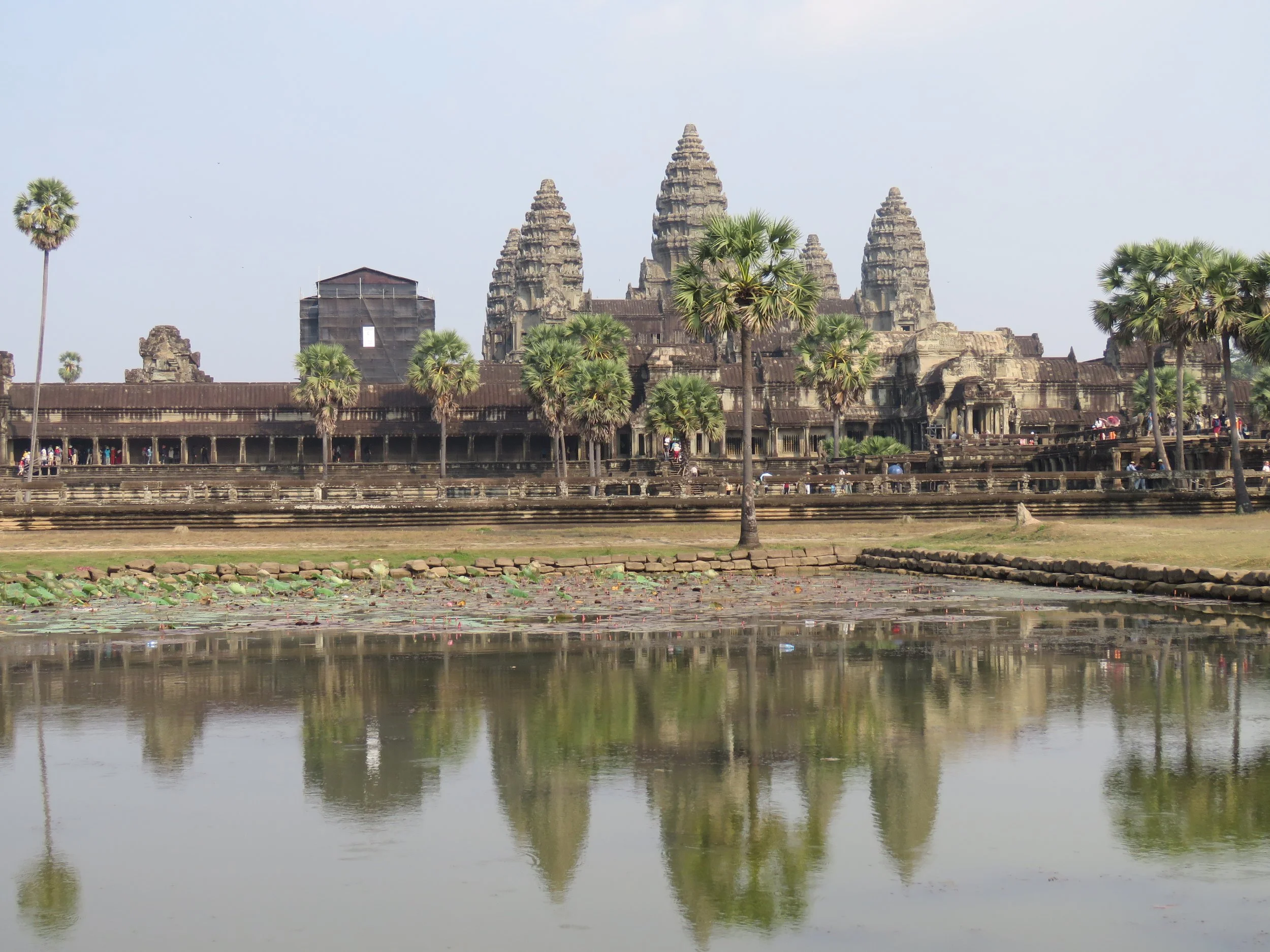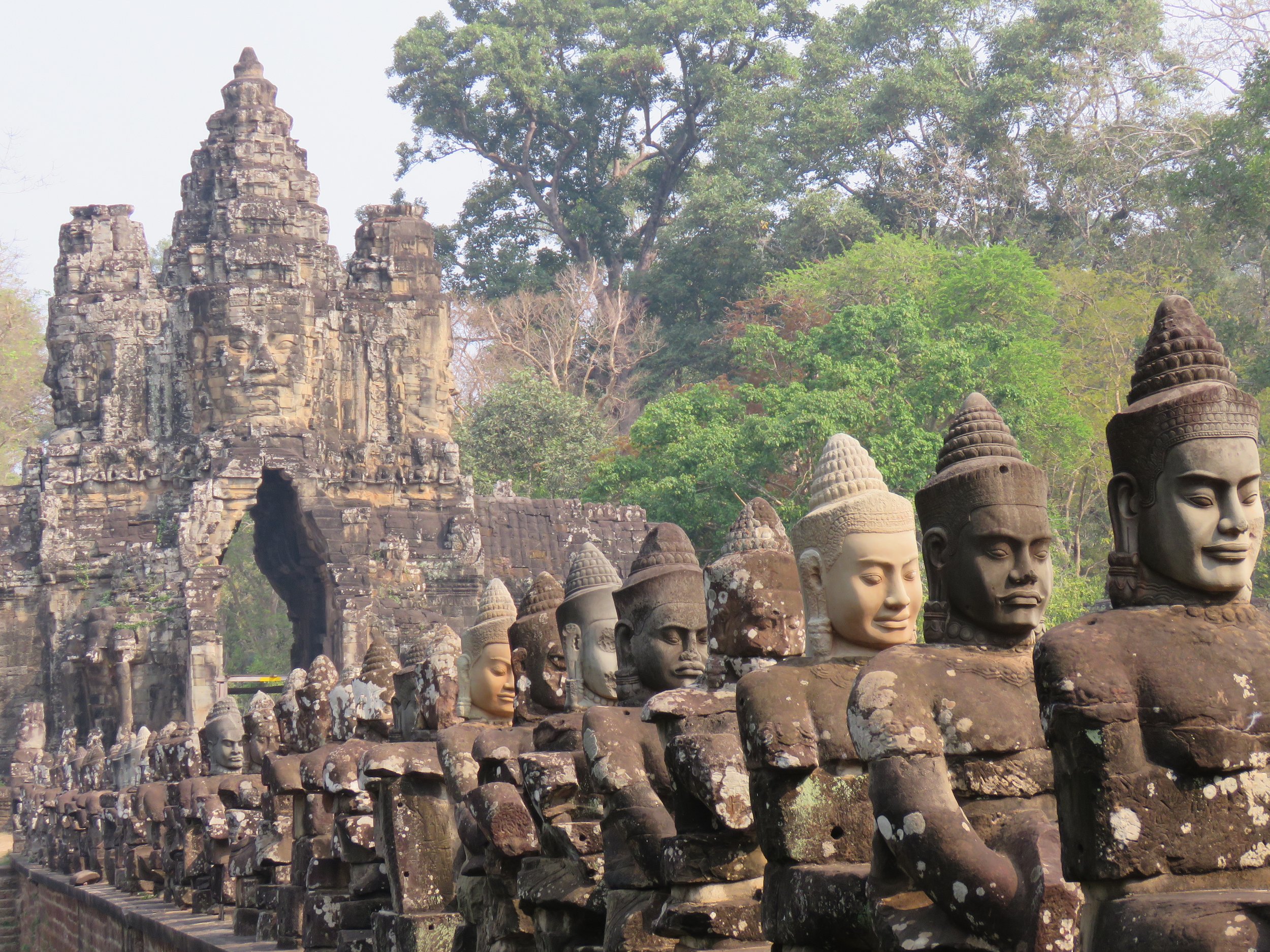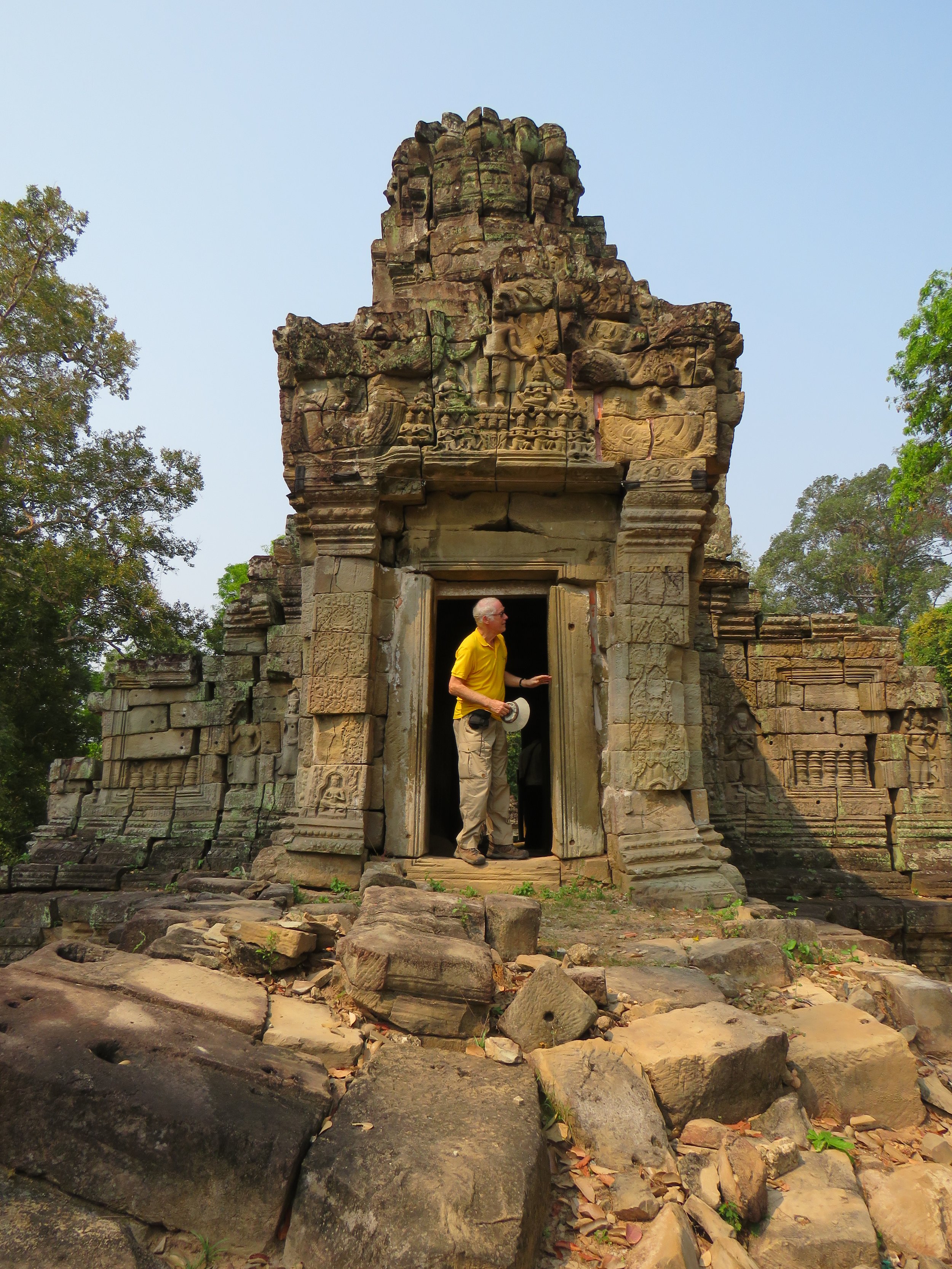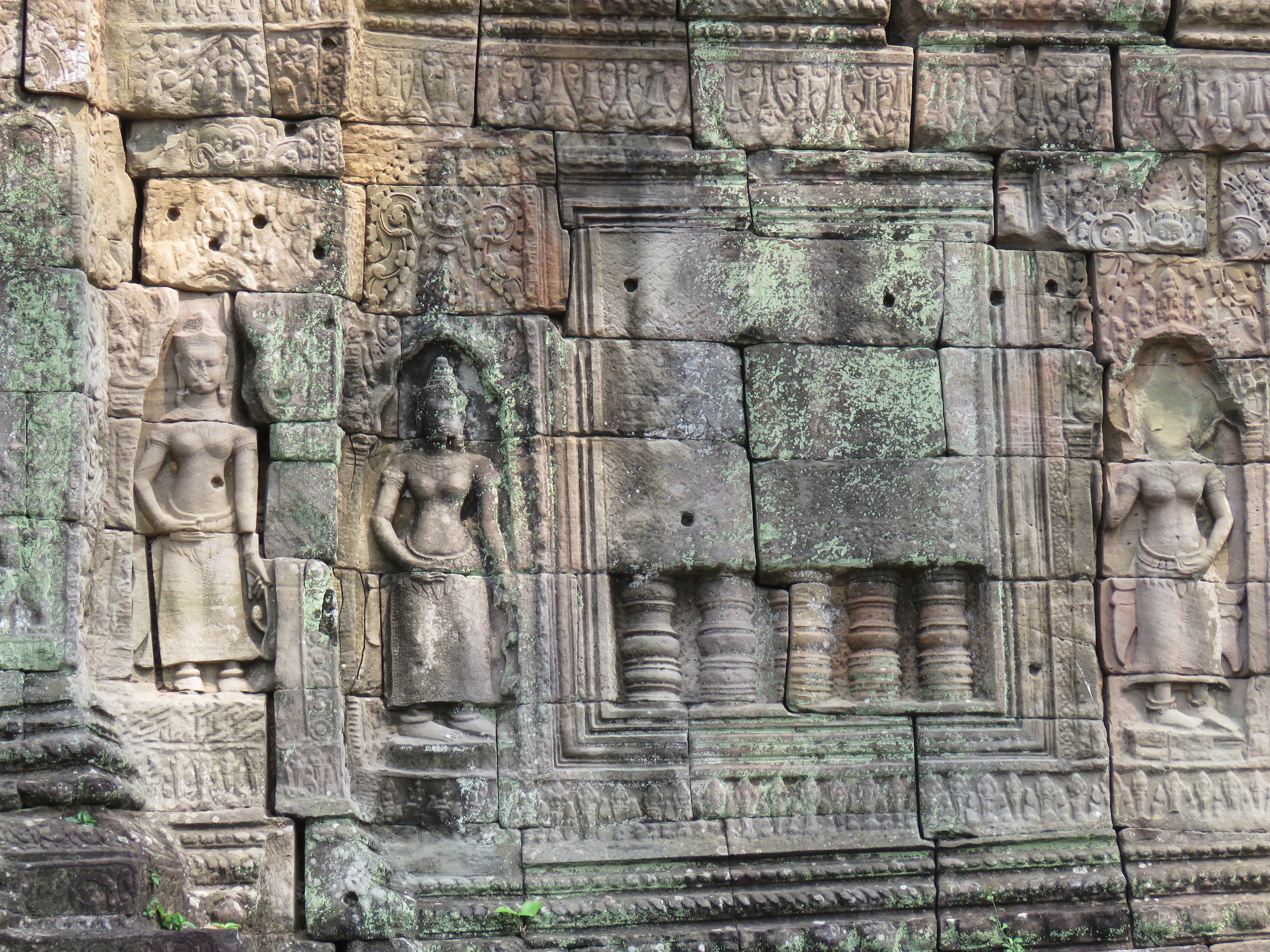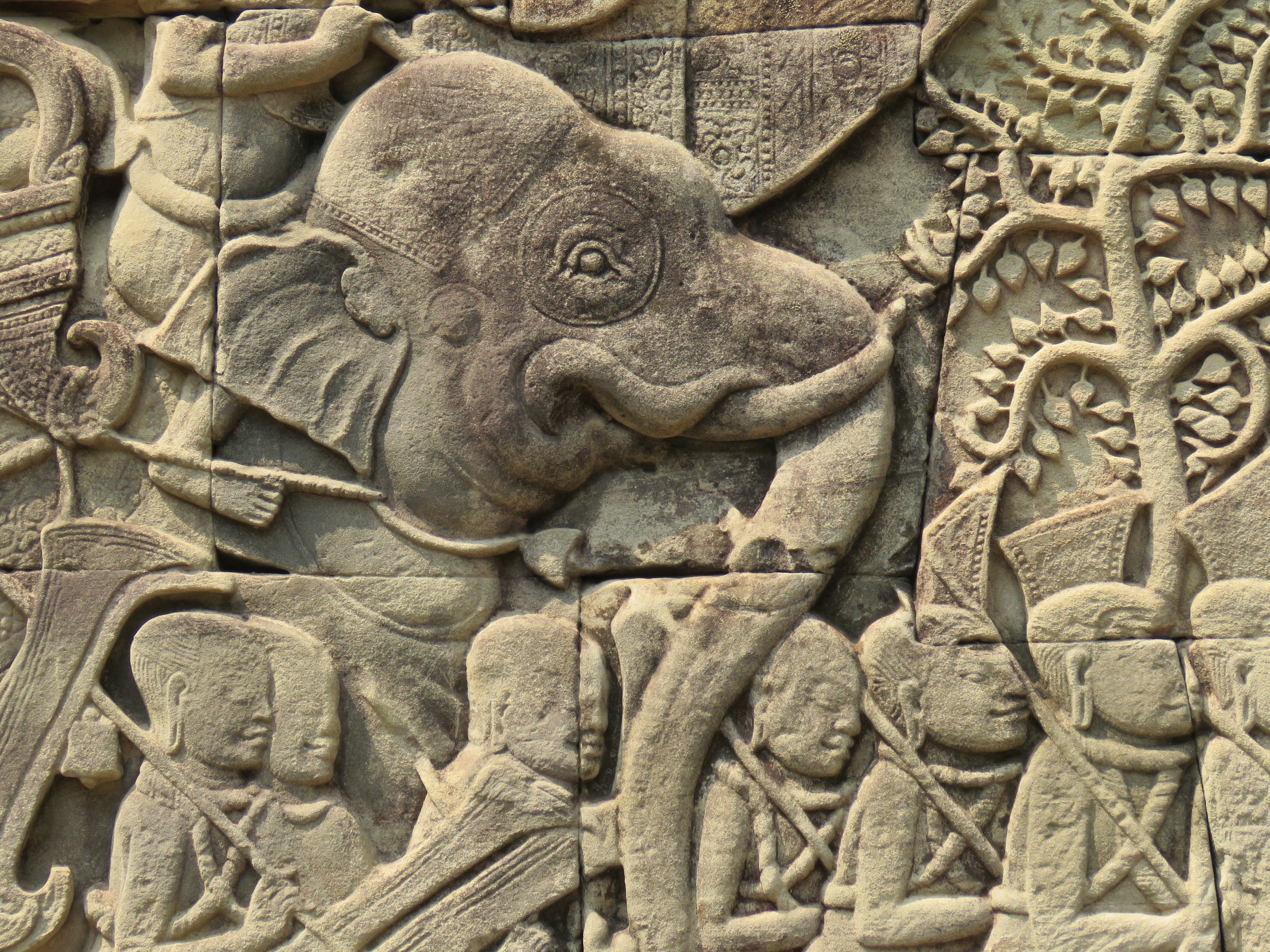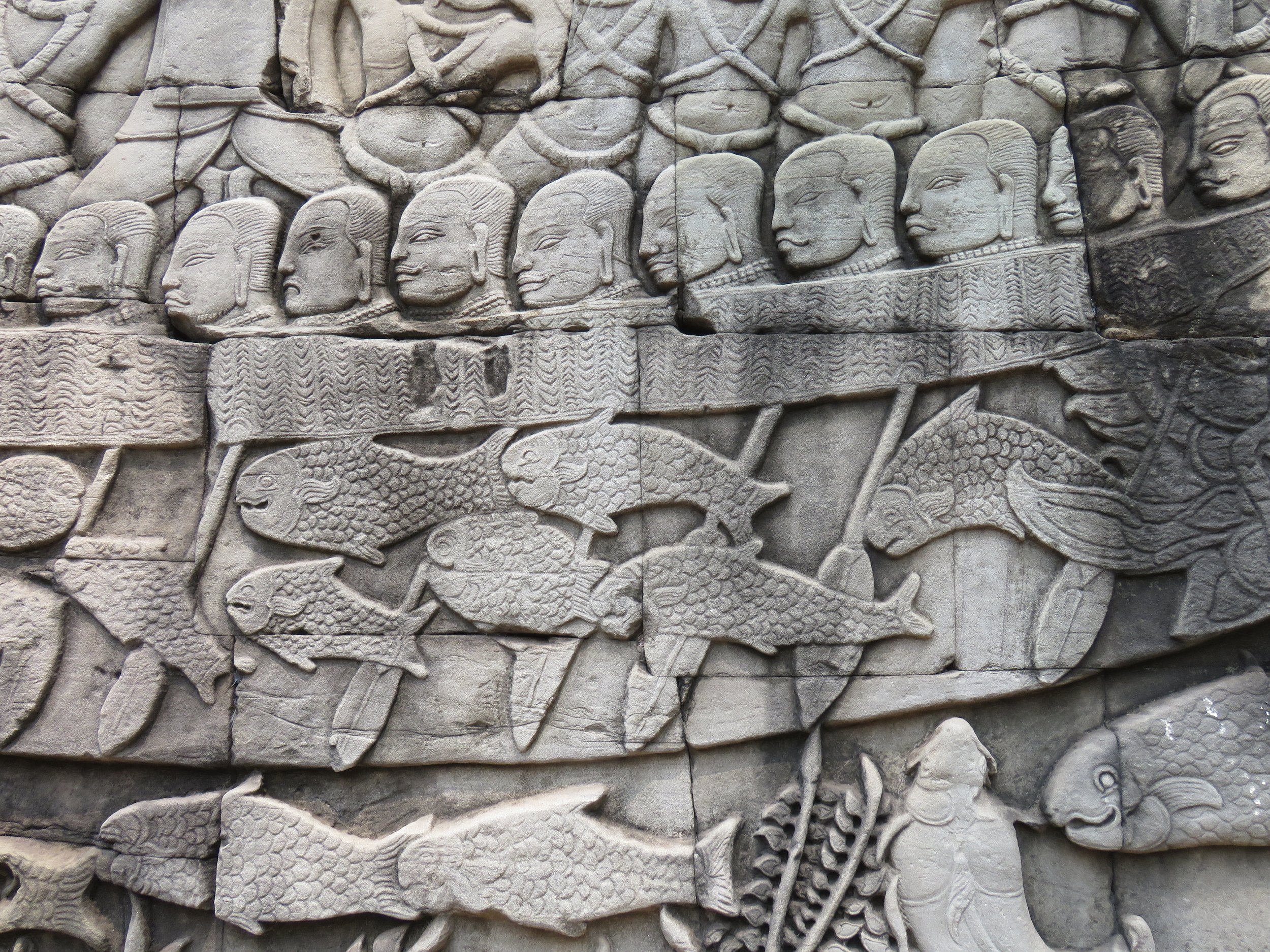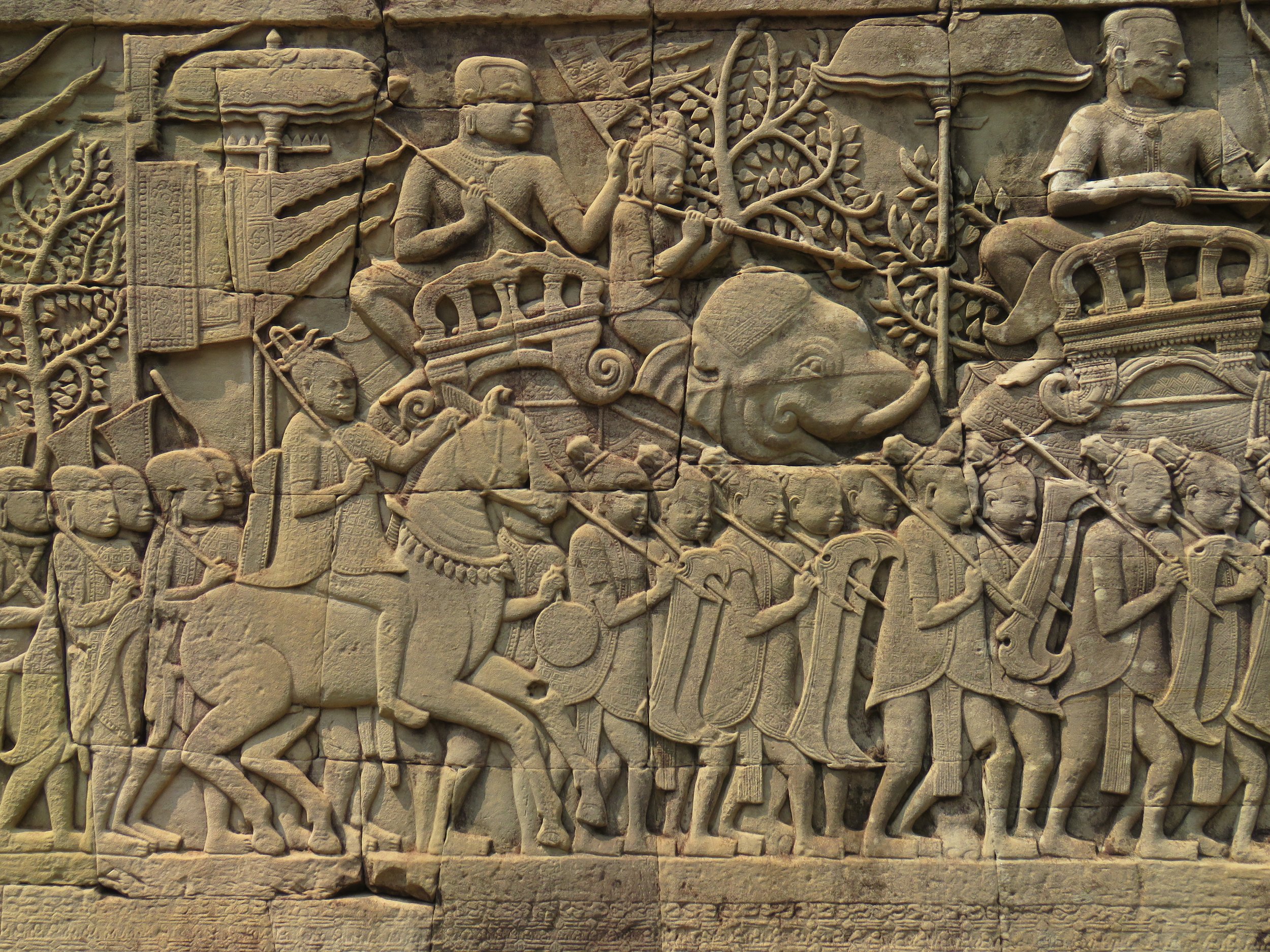33º and we are hiking. It’s all Kees’ fault. He’s the one who loves to hike. When locals here in Cambodia look at us in astonishment and ask “why?” I shrug, point at my husband and say with a smile “ask him”.
I know. He loves the physical exercise. He loves the solitude of walking through the country side. He loves the challenge of long distance hikes with a big pack, walking day after day.
After trudging along for several long distance hikes in Holland, for a long hot one in Australia, walking across Israel and for part of the Camino de Santiago, I decided that - much as I love him - I like walking but not long distance hiking.
And so we usually look for compromises. Active holidays with lots of walking but the comfort of a good room and no lugging of luggage day after day. Is a 15 day trek in Cambodia a compromise? I think so - it’s active, lots of walking, yet comfy hotels and no backpacks - although it is different from what we expected.
We found a website and liked what we saw. We received an itinerary and Cambodia Cycling & Trekking was very willing to tweak and answer questions. Each day we would walk - the itinerary told us things like “Day 3: Siem Reap to Kratie. Breakfast at the hotel, visit Kompong Kdei Bridge, transfer to Santuk Mountain, climb to hilltop pagoda, transfer to Kratie.” After our first field trip, to see the floating school at Tonlé Sap, about which I wrote in my book My School in the Rainforest, we embarked on our hiking holiday. What we hadn’t realized, is that the ‘transfers’ mentioned in the itinerary sometimes amounted to driving 400 KM a day between hikes. Each day listed the walking distance, ranging from 3 to 17 KM. Three days seemed to be very short hikes, and 17 was a bit daunting but oh well.
We hiked and visited all ‘red stars’ acoss the country.
Our wonderful guide Poleak.
Once here, we realize that the oppressive heat plays havoc with your body. I found that 4 to 5 KM was fine, after that things became a struggle especially when the ‘hilltop pagoda’ was on top of 800 steep, uneven steps in the blazing sun.
We had also not realized that the same guide and driver, two wonderful young, energetic men, would stay with us the entire time. It was a huge treat to have our luggage transported and near us at all times. From the correspondence, we had understood that it would just be the two of us, with a different guide in different regions. But it was great to get to know each other and to always have a local, who spoke excellent English, to explain things or to ask detailed questions. It felt safe and luxurious to have a constant guide with us.
When we leave the hotel, with Poleak our guide, in Siem Reap at 8 AM it is still relatively cool. By noon we will be sweating buckets… On our first day of hiking, we drive into the vast area of Angkor Wat. During the 12th century, this was the world’s largest religious area encompassing some 400 square KMs. There were many villages and people would come to worship at the elaborate temples.
While walking in Angkor Wat we saw many sites you’d never see from a car.
Many of the stone buildings have now collapsed and the jungle is winning the battle. Stone carvings surrender to tree roots, some trees towering a hundred meters on top of an old wall. With new technology of lidar (laser imaging radar) they are discovering many more old roads, walls and buildings hidden by jungle.
We enter the ancient capital area, on foot, at the South Gate of Angkor Thom and hike through beautiful shaded forest on a pleasant sandy path. This major attraction may be inundated by tourists, but théy are not hiking! We walk around a tranquil lake and listen to birds. At one point we reach a busy entrance gate where endless throngs of traffic arrive. Walking through the woods, we had no clue there were thousands of tourists nearby.
We walk through Bayon Temple and hear about the many stories depicted in endless stone carvings around the temple walls. This is ancient storytelling at its best: facts and myths intertwine in stone, leaving a legacy of stories and morals about Hindu gods and Buddhist beliefs. Stories of battles won and battles lost, of a sea turning to milk, of snakes and gods.
We continue our walk on top of the ancient stone walls surrounding the compound, for many kilometers until we arrive, via the Terrace of the Elephants, at Cambodia’s main attraction: Angkor Wat - constructed in the 12th century and dedicated to the Hindu god Vishnu.
This most important temple towers 65 meters from ground level. Since the temple represents heaven, no buildings in the vast area of Siem Reap are allowed to be taller - a wonderful way to keep high rises from taking over the landscape.
All Cambodian Buddhist hope to visit this temple at some point, much like Muslims trekking to Mecca. The temple itself is gigantic and you can easily spend an entire day walking around, climbing the towers and watching the sun rise or set on this national landmark. My favourite moment is watching flame-orange robes of monks walked by against the blackened stone of the ancient temple. Like in other Buddhist countries most people serve their country as priest for some time in their lives. This can be for a few days, for a month or for several years. While serving, the community provides for the monks by cooking and bringing them food.
In a next Cambodia blog we’ll continue our hike around the country, including a homestay, a national park and a silk weavers’ village.
https://www.cambodiacycling.com/Cambodia-Trekking-Mekong.htm
https://www.history.com/topics/landmarks/angkor-wat
BOOKS - scroll to Cambodia
